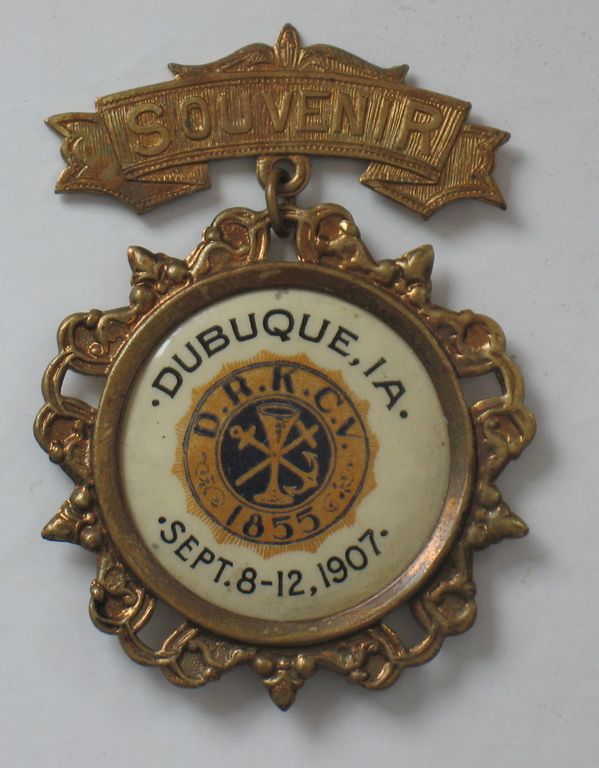Encyclopedia Dubuque
"Encyclopedia Dubuque is the online authority for all things Dubuque, written by the people who know the city best.”
Marshall Cohen—researcher and producer, CNN
Affiliated with the Local History Network of the State Historical Society of Iowa, and the Iowa Museum Association.
GERMAN ROMAN CATHOLIC CENTRAL UNION
GERMAN ROMAN CATHOLIC CENTRAL UNION. A Catholic fraternal organization, the German Roman Catholic Central Union is abbreviated D.R.K.C.V. standing for the name of this organization in German, Deutscher römisch-katholischer Centralverein.
The Central Verein dates to 1854 when the presidents of three German Catholic benevolent societies of Buffalo, New York, issued a call to various German Catholic societies to form a central body. The movement was inspired and supported by zealous missionary priests, and approved by Bishop Timon of Buffalo. A similar organization in Germany (founded at Mainz, 1848), gave additional support to the arguments for a union in the United States.
Seventeen societies responded and on April 15, 1855, the Central Verein was organized in St. Alphonsus Hall, Baltimore, Maryland. The main goal was to unite the the various associations against freemasonry and secret societies in general. Membership was restricted to Catholic benevolent societies whose official language was German. The growth by decades:
1855 — 17 societies (1,500 members) 1865 — 62 societies (8,340 members) 1875 — 302 societies (31,672 members) 1885 — 378 societies (32,783 members) 1895 — 548 societies (48,989 members)
The growth became less, and in 1901 a reorganization movement was begun. Instead of affiliating local societies, the formation of state organizations called "Staatsverbände" was encouraged. Local societies lost their direct affiliation to the Central Verein. This plan proved a complete success.
In 1907 the report of the secretary showed sixteen state organizations and fifty-two local societies from states in which no "Staatsverband" existed, with a total paid-up membership of 99,291. The unreported membership would bring this total far beyond 100,000. The Holy See approved the work of the Central Verein in a reply to a letter of allegiance sent by the eleventh general convention held at Buffalo, 1866, to Pope Pius IX. The reply praised the spirit of Catholic unity prevailing among the members and wished them success and the assistance of Divine grace. It gratefully acknowledged the contributions the Central Verein had gathered for the support of the Holy See. During fifty-two years, the society contributed about $12,000 to the Peter's-pence collection.
The care of the immigrants was a prominent feature of the work of the society. Special agents were appointed to look after their interests in New York and Baltimore. Later the Central Verein was affiliated to the St. Raphael's Society. The result of their combined efforts was the establishment in New York of the Leo House for the use of Catholic immigrants. Aid was extended to a similar undertaking at Galveston, Texas. The Teachers' Seminary at St. Francis, Wisconsin, was founded mainly by contributions from the society. In his address to the delegates assembled in Dubuque, Iowa, 1907, Archbishop Falconio, the Apostolic Delegate, said: "What your society has done in the interest of Christian education is truly admirable and an example worthy of imitation for all Catholics". The annual conventions, under the name of "Katholikentage", assumed large proportions. Extending over four or five days, they included solemn church festivities, parades, addresses by prominent clergymen and laymen, business meetings, and social gathering.
---
Source:
"German Roman Catholic Central Verein of North America," Catholic Encyclopedia, Online: https://www.newadvent.org/cathen/03534a.htm


